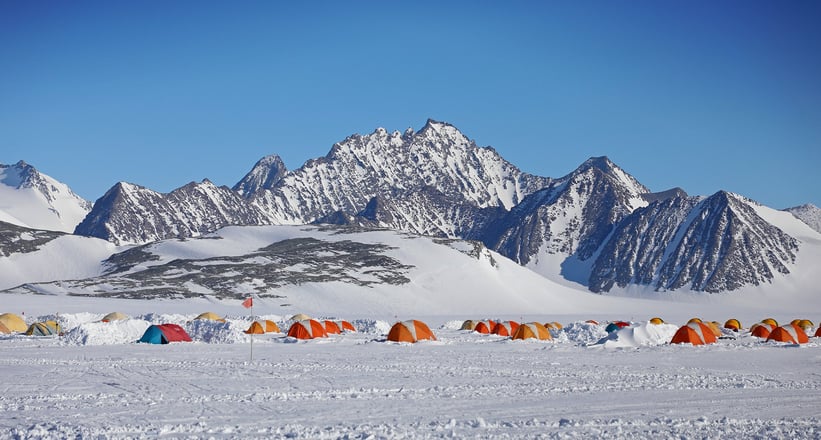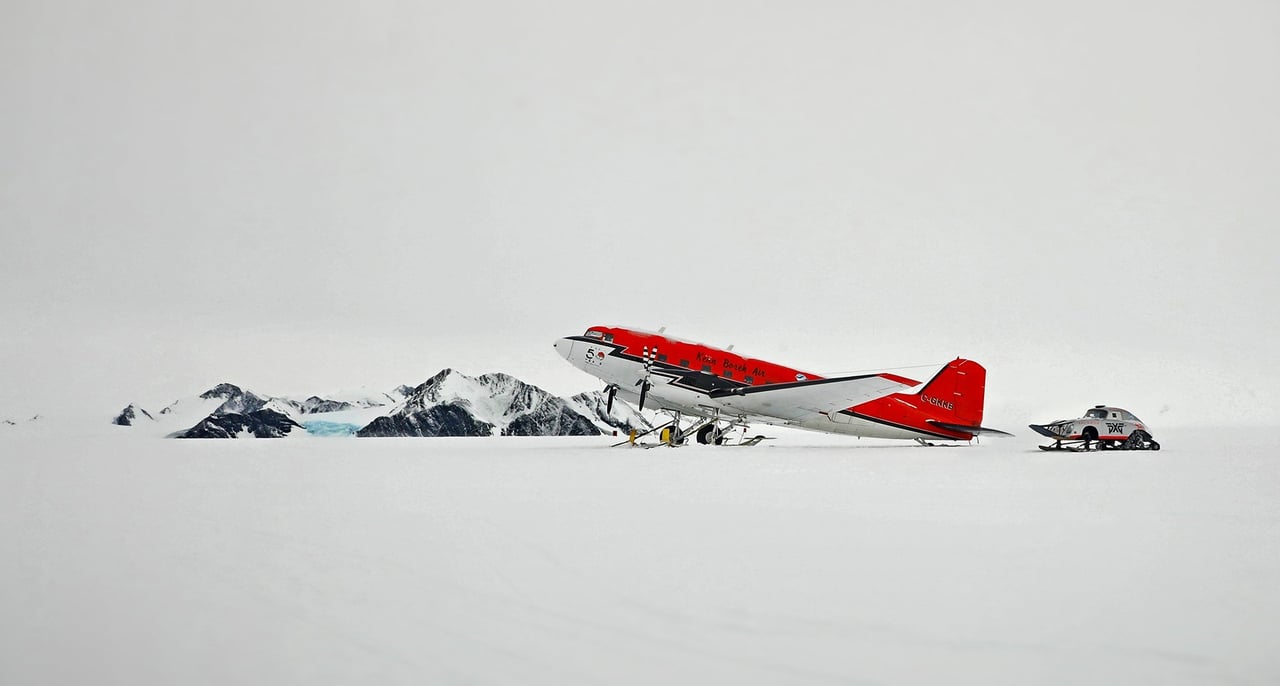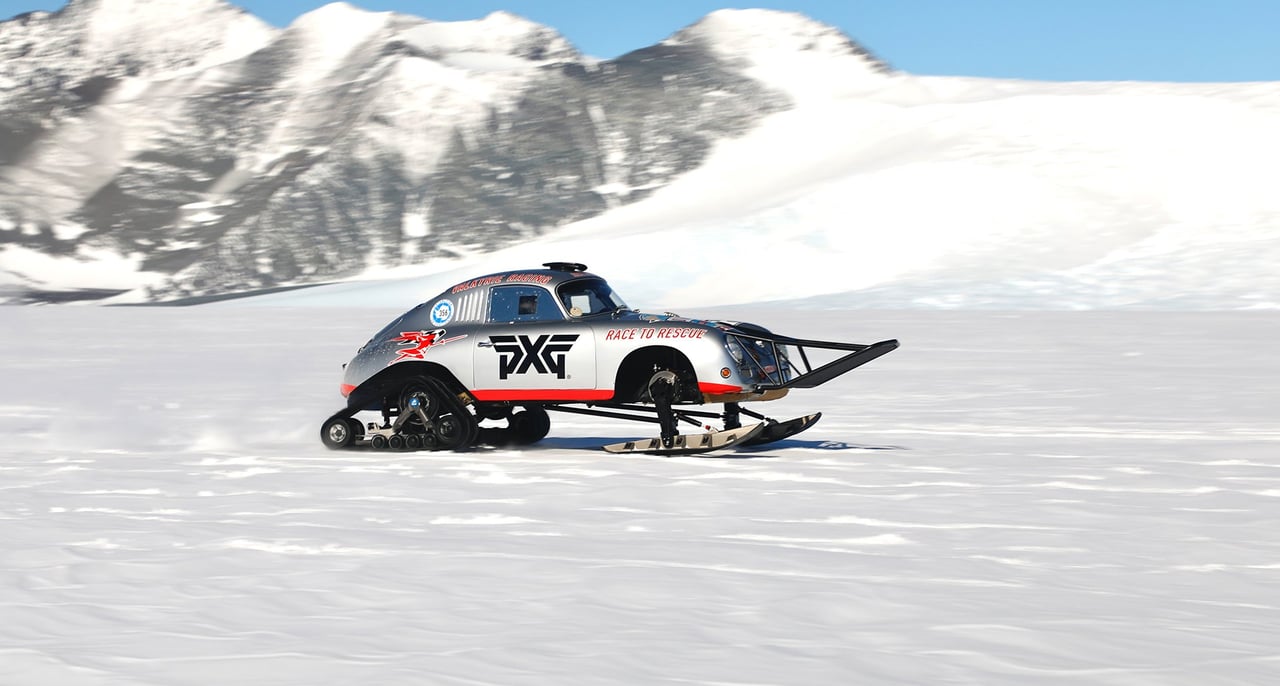


That's because this month Brinkerhoff landed the one Christmas present she really wanted - achieving her ambition to drive a classic car in gruelling conditions on all seven continents by completing a 356-mile run around Antarctica in the same, beloved 356 that has already carried her close to 20,000 miles while competing in a string of the world's toughest endurance events. But for Brinkerhoff, it's about a whole lot more than just the drive. Driving under the 'Valkyrie Racing' banner, she has now secured more than $500,000 through her charitable foundation 'Valkyrie Gives' which is on a mission to help stamp-out human trafficking both by raising funds and increasing awareness.



It all started back in 2013 when, at the age of 57, Denver-based Brinkerhoff decided to take part in her first long-distance rally - Mexico's famously dangerous Carrera PanAmericana - an event she has now completed four times, coming 'first in class' in both 2013 and 2017. Since then, she and the silver 356 (both now 65) have taken part in everything from the Targa Tasmania to the Caminos del Incas and from the Peking to Paris to the East African Classic in order to tick-off the six continents that left 'just' Antarctica remaining. And, for a multitude of reasons, it represented the biggest challenge of all.



Preparations began back in the summer of 2020 when chassis design engineer and extreme explorer Kieron Bradley set about re-modelling the car specifically for the Polar conditions. That meant removing weight wherever practical and substituting the regular road wheels with tracks at the back and skis at the front. Front crevasse bars fitted with solar panels were also added, along with special bracing and suspension to take the extra load of the skis, which play a vital role in smoothing the way for the tracks and guiding them in the right direction.



Other mods included a TIG-welded roll cage; low-temperature compressor; four-ton bag jack capable of lifting the car in deep snow; winch point on the engine frame and a gearbox temperature gauge. The car was also designed to enable any occupants to reach survival gear, water and comms. equipment from the driving seat - and, if the worst came to the worst, to be able to escape via the rear window.



The trusty 356, which is ordinarily prepared and cared for by Tuthill Porsche in the UK, finally arrived at Antarctica's Union Glacier in early December for what was to have been an almost imminent departure. But a combination of global Covid restrictions - which had already set the project back nearly two years - and weather that was far worse than usual meant the team were running three weeks behind in establishing camp and didn't have the chance to set-up fuel dumps along the route. As a result, it was decided to complete the 356-mile challenge by covering a course of up to 140 miles per day that would bring the crew back to base at the end of each session. In the event, the bad weather and multiple setbacks meant Brinkerhoff had to drive every day for several hours at a time - but she did it and, during a 10-minute phone conversation held with Classic Driver as she waited to board a 'plane from Punta Arenas back to Denver for a family Christmas, she told us just what it had been like.



"I have to admit that there were times when I was not confident. People who know the area well said the weather was the worst it had been in this season for eight years, with temperatures at zero Fahrenheit (-18c) - not accounting for wind chill - and frequent white-outs that meant a huge amount of moisture in the air. Fortunately, I was accompanied in the car by navigator and record-breaking Polar explorer Jason de Carteret, while Simon Redhead - who has been Valkyrie Racing's chief mechanic from the very beginning - travelled in an Antarctic-prepared Toyota Hi-Lux equipped with tools and spares.”



"There was no way we could drive fast, especially on the blue ice which was covered in ridges and sharp edges. Sometimes we were travelling as slowly as 12mph for an hour at a time but, on the flat snow, the car was absolutely killing it and - although we only hit a maximum of around 34mph - it felt like we were flying. But there were endless problems. At one point, we were heading up a glacier in a white out, the radios weren't working and neither vehicle knew where the other one was. It's so disorientating, with no visibility, no landmarks, no tracks.”



"Due to the extreme conditions, we were using around a litre of fuel every mile and often the car would just stop dead due to icing-up. The air filters, for example, would absorb moisture and then freeze solid and, on one occasion, Simon had to change one of the carburettors in a blizzard because the jets were filled with ice. On two occasions the engine simply would not run, and it looked as though we would have to pull it out and replace it with the spare that we had shipped-out there. But both times, we woke-up in the morning and the car fired-up perfectly. It was very, very strange, but we were told that it's quite common in the Antarctic for an engine to appear to be toast but to somehow 'get better' by itself.”



"One of the biggest problems, however, centred around the system that carried the skis. The hubs were attached with absolutely massive bolts that appeared to be far larger than necessary, but they kept on shearing, first one side, then the other - on some occasions we had to make it back to camp driving super slowly with one hub broken." But, after five extremely tough days, the lion-hearted Porsche completed sufficient miles to match its model number - meaning Brinkerhoff had achieved her goal. "The car is simply remarkable," she concluded. "Each time we have accomplished something together I have come to appreciate it, love it and respect it more and more. It sounds ridiculous, but we almost think of it as a person and there is simply no way I would ever part with it unless - and I'm not even sure about this - someone offered to buy it by making a truly massive donation to the charity," says Brinkerhoff.



"What I'm really thinking about now, though, is taking it back to Union Glacier as soon as possible. Given how well it performed this week, I'd like to have a go at breaking the record for driving to the South Pole. It's a distance of around 700 miles (1,138 km) and the fastest anyone has driven it so far is around 39 hours. With a few simple fixes to the car, I think we could beat that." And somehow - we think so too...
Photos courtesy of Valkyrie Racing © 2021

































